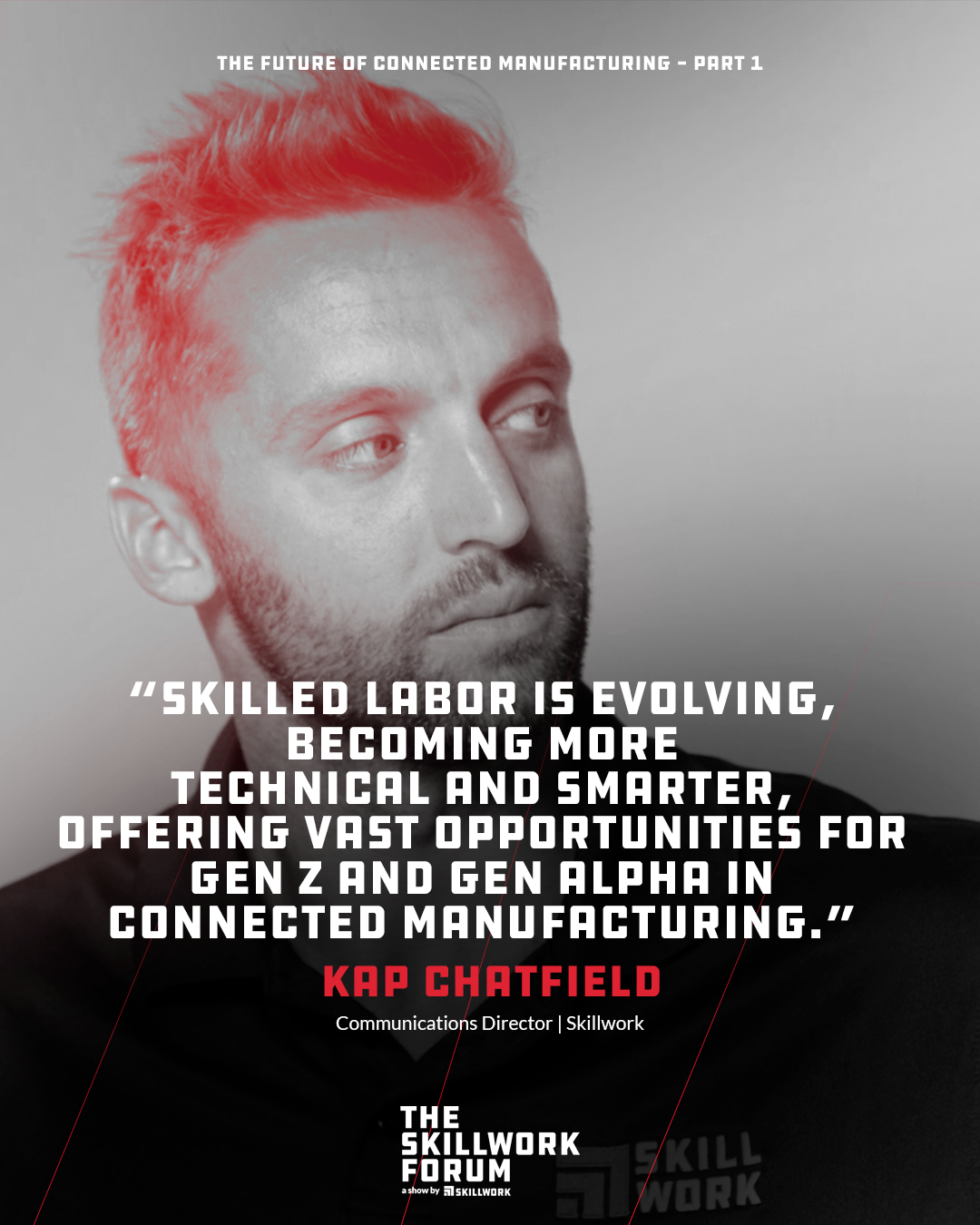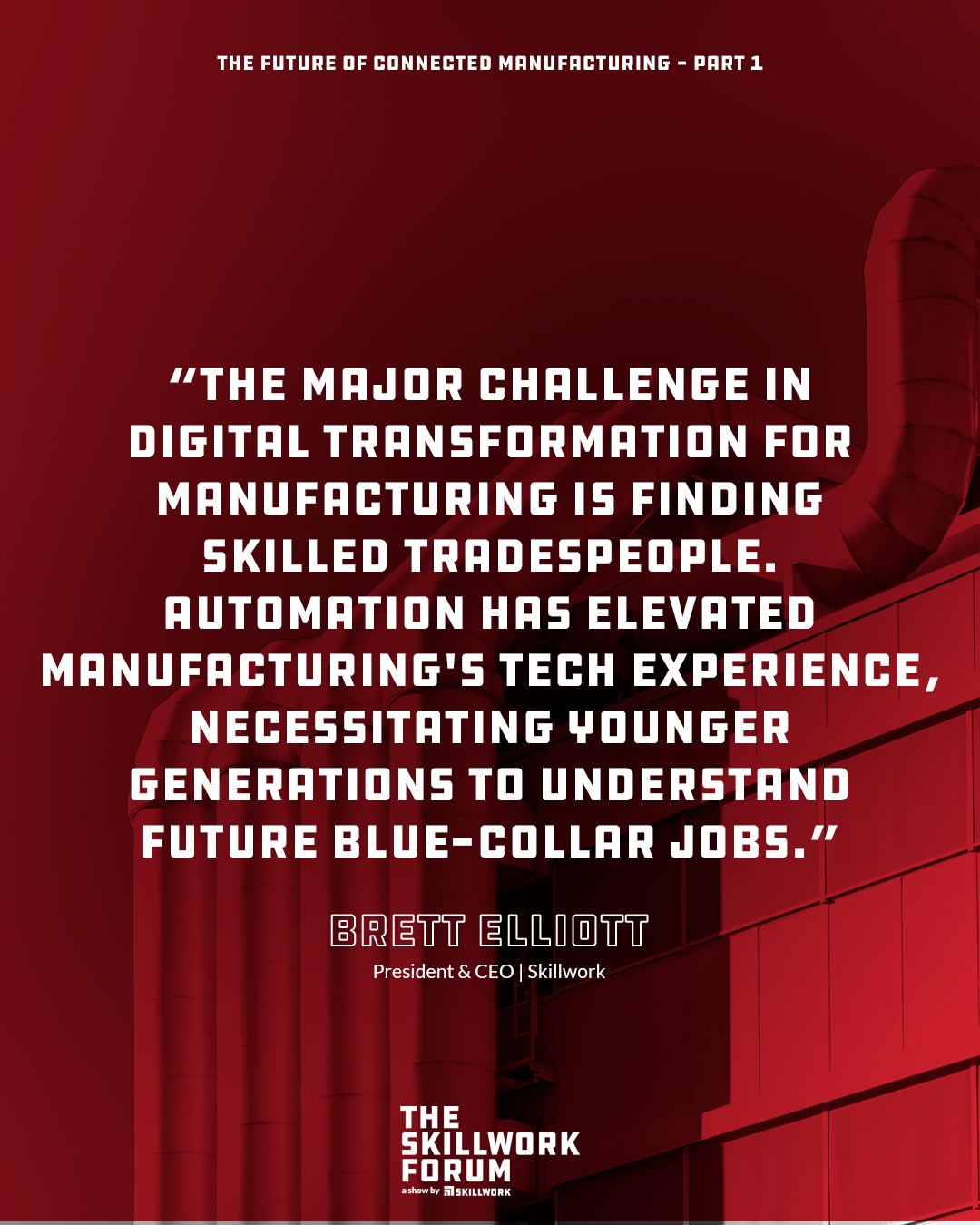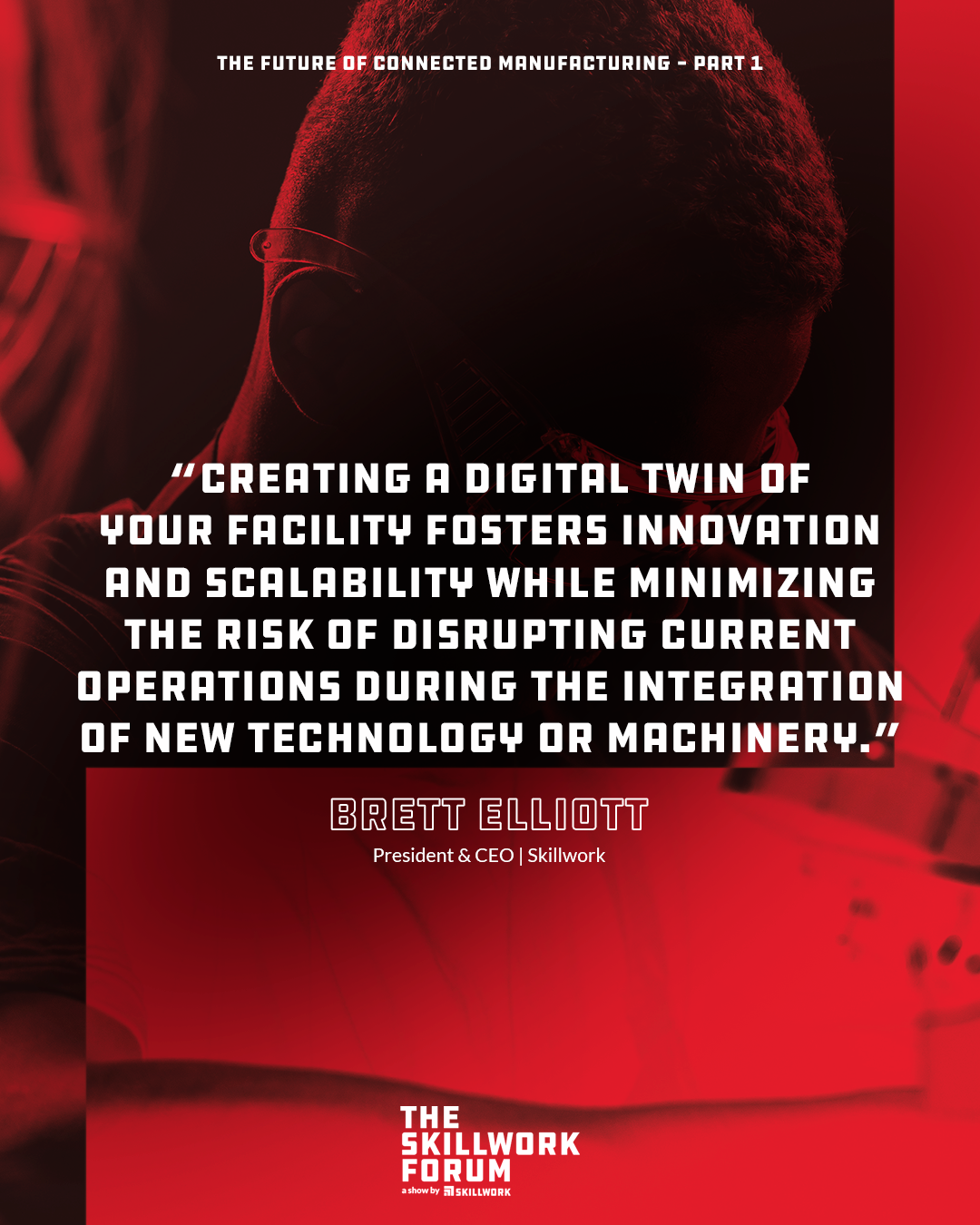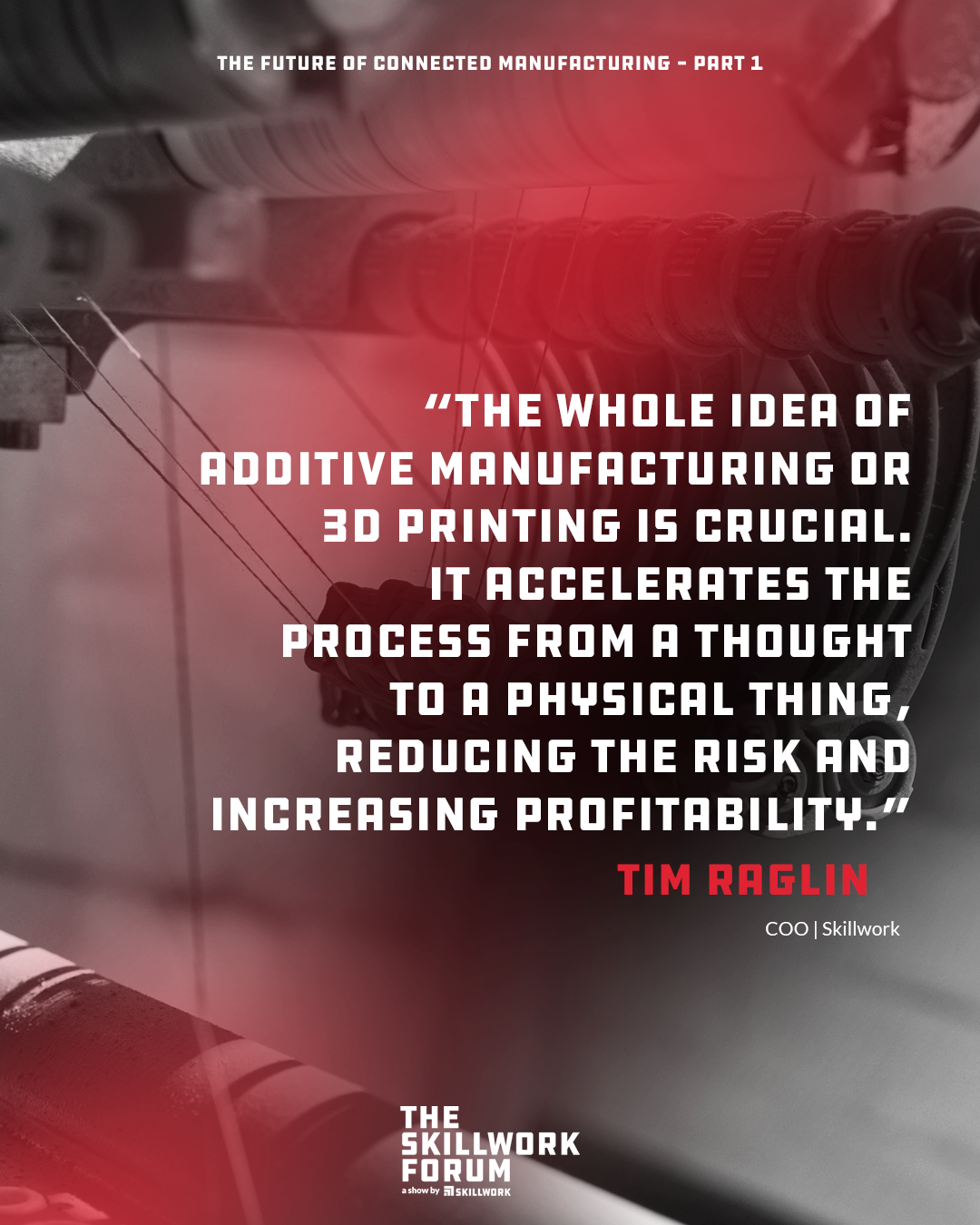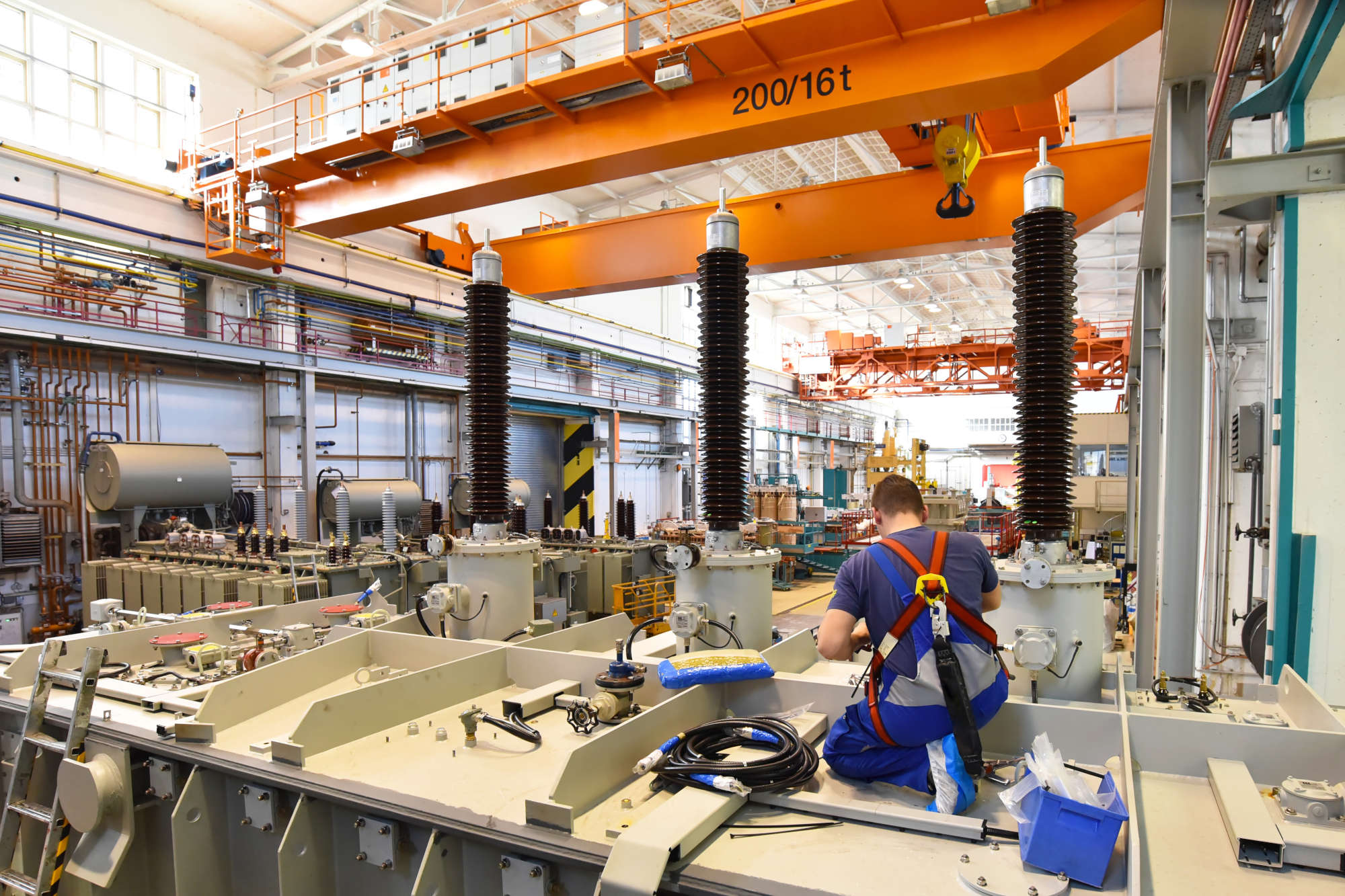What Is the Future of Manufacturing? [Part 1]
If you desire you can listen this episode on Spotify.
We recently attended and presented at a forum called Connected Manufacturing that really leaned into the Fourth Industrial Revolution (Industry 4.0) and automated manufacturing and the challenges surrounding them.
Today, we’re going to share a snippet of what we learned from that forum and discuss some of the topics that got brought up like new technology in the manufacturing industry.
Team Takeaways
As an attendee – and Millennial – Skillwork’s Director of Communications, Kap Chatfield, said he left being more impressed and inspired by the manufacturing world in general. As he realized how innovative and “smart” the industry has become due to technological advancements, he noted that there’s a tremendous opportunity for Gen Z and Gen Alpha to get involved.
On that note, Brett Elliott, President and CEO of Skillwork, said that the biggest challenge of digital transformation in the manufacturing industry is finding the right skilled talent. As five Baby Boomers exit the trades, only two are entering from the younger generations, which is a factor contributing to the skilled trades shortage.
Tim Raglin, COO of Skillwork, jumped in, saying a mindset shift needs to take place. Today, manufacturing is very technical, automated, challenging, and innovative, but it’s not perceived that way. The message that manufacturing is on the cutting-edge needs to be communicated to younger generations because they are crucial to the future of the trades.
Now, let’s talk about some of the future manufacturing technology that makes manufacturing such an innovative industry.
Definitions of New Technology In The Manufacturing Industry
What Is Connected Manufacturing?
Connected manufacturing is the integration of advanced technologies such as the Internet of Things (IoT), Artificial Intelligence (AI), and automation to enable intelligent communication across machines, devices, and systems. This interconnectivity aims to create smart factories that function more efficiently using innovative manufacturing processes.
By using a mix of new technology in the manufacturing industry, manufacturers are able to make data-driven decisions that streamline operations, reduce downtime, ensure safety, and improve quality. Keep in mind that a connected factory collects overwhelming amounts of data, so be sure you’re measuring the manufacturing metrics that matter.
What Is Additive Manufacturing?
In traditional manufacturing, objects are typically formed by cutting, drilling, or shaping raw materials to achieve the desired shape. Additive manufacturing (AM), on the other hand, uses data computer-aided design (CAD) software or 3D object scanners to build three-dimensional objects layer by layer from materials such as plastic, metals, and ceramics.
Additive manufacturing is often used for rapid prototyping, enabling manufacturing facilities to iterate and test designs before committing to large-scale production. It reduces risk and the ROI can be incredible. For example, at the conference, one speaker said they went from paying $100 a unit for a certain part to $1 by 3D-printing it in-house.
What Is a Digital Twin In Manufacturing?
A digital twin in manufacturing refers to a virtual replica of a physical product, process, or system. It is a digital counterpart that mirrors the real-world entity down to its minute detail, capturing both its physical attributes and its behavior in a virtual environment.
For example, let’s say you're trying to figure out where to add a new piece of equipment in your facility. A digital twin gives you the flexibility to work within the square footage of your facility’s virtual model to determine where that equipment will fit best without buying it, bringing it in, and moving everything around.
What Is Augmented Reality?
Augmented Reality (AR) is a technology that overlays digital information, such as images, videos, or 3D models, onto the real-world environment in real-time using devices like smartphones, tablets, smart glasses, or wearable headsets. These devices use cameras and sensors to capture the physical world and then render and display digital content on their screens or in the user's field of view.
AR solutions are being increasingly used in manufacturing to train and upskill workers at all levels. AR offers an immersive and interactive platform for training new employees like industrial maintenance technicians where they can practice tasks in a virtual environment before working on real equipment.
Stay Informed About Current Trends In Manufacturing for the Future
Stay up to date on trending topics in the trades like new technology in the manufacturing industry and the skilled labor shortage by tuning in for our next episode of The Skillwork Forum where we continue this conversation about connecting manufacturing with machines.
If you’re interested in hearing from the voices of tradesmen, check out our other podcast, The Proud Skill Worker, hosted by one of our guys here, Michael Peatrowsky. We believe it’s really important to learn what they’re thinking and how these transformations affect them, too.